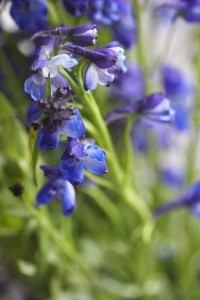Limonium
 Also known as statice or broad-leaved statice, species of Limonium are also referred to as Sea Lavender or Marsh-rosemary.
Also known as statice or broad-leaved statice, species of Limonium are also referred to as Sea Lavender or Marsh-rosemary.
Description
They can be annuals, evergreen perennials or deciduous, with green foliage from spring to autumn depending on the species. Limonium produce either clusters of small flowers or masses of small lavender and pink flowers. They grow to about 1 metre tall with a spread of 0.5 meters, taking up to five years to mature.
Habitat
Limonium is found naturally all over the Northern Hemisphere. These flowers do well in cottage or informal gardens, in flower beds or when used for border displays. Limonium platyphyllum, or Sea Lavender, does especially well in dry, gravelly sites or coastal gardens.
Availability
Propagation is by seed sown in pots during spring in well-drained soil in a sunny location. If you don’t want to grow your own flowers, Limonium are widely available as cut flowers from florists. Division of plants is possible in spring.
Species
Limonium belongs to the Pumbaginaceae family . Limonium bonduellii (Forever Gold) and Limonium platyphyllum (Broad-leaved statice) are two of the most popular and widely available species. They differ in appearance both in growing habit and colour. Forever Gold is an upright plant with branched stems and vibrant clusters of yellow flowers. Broad-leaved statice has more rounded leaves and bears sprays of white, violet or lavender coloured flowers from July through to September.
Care Tips
In the garden, plant Limonium in full sun in a south-facing position. They’re not fussy plants and will tolerate both acid and alkaline soils, although they do prefer a sandy soil. Prune the plants once they’ve finished flowering, making sure to cut them well back. Forever Gold may need winter protection from frosts, while Broad-leaved statice is hardier. Both species are generally good pest- and disease-free additions to the garden.
Did you know?
The name Limonium comes from the Greek word ‘leimon’, which means ‘meadow’.
References
http://apps.rhs.org.uk/plantselector/plant?plantid=1169
http://apps.rhs.org.uk/plantselector/plant?plantid=1168
http://www.bbc.co.uk/gardening/plants/plant_finder/plant_pages/489.shtml


